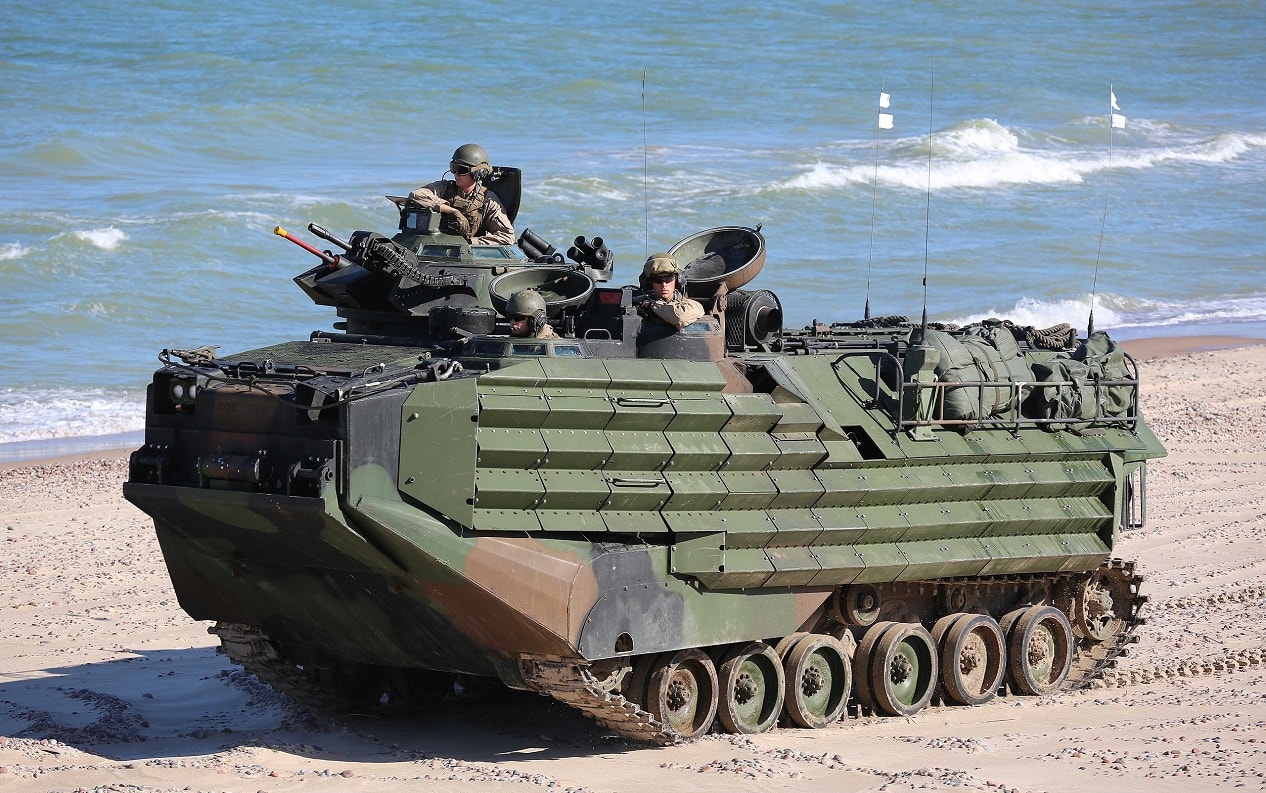On Wednesday, the U.S. Marine Corps announced that it has banned its fleet of amphibious armored personnel carriers from maritime operations except in emergencies. This decision to restrict the AAV-7A1 Amphibious Assault Vehicles (AAVs) leaves a huge capability gap in the U.S. military’s dedicated amphibious and expeditionary force.
According to a news report by the U.S. Naval Institute, the Marine Corps leadership came to this decision following several lengthy investigations that were prompted by the death of eight Marines and one Sailor in 2020 during a training exercise.
An Amphibious Vehicle Banned From the Water
Following the tragic incident in 2020, the Marine Corps thoroughly inspected all of its Amphibious Assault Vehicles. What inspectors found was alarming. Nearly all vehicles leaked badly. In one instance, only 10 out of 200 vehicles passed an intense inspection.
But the Marine Corps resumed waterborne operations earlier this year. Until now with the decision to ban the Amphibious Assault Vehicle from the water.
“The Marine Corps stands by the efficacy of the recommendations that came from the multiple investigations into the AAV mishap from the summer of 2020, and with those recommendations implemented and sustained, the AAV is a safe and effective vehicle for amphibious operations,” the Marine Corps said in a statement, according to USNI News.
The Marine Corps has said that the Amphibious Assault Vehicle fleet will only be used in an emergency, suggesting that in the event of a conflict with China or some other worldwide contingency, Marines would be using the vehicle.
“That said, given the current state of the amphibious vehicle program (the program that manages both AAVs and ACVs), the Commandant of the Marine Corps has decided the AAV will no longer serve as part of regularly scheduled deployments or train in the water during military exercises; AAVs will only return to operating in the water if needed for crisis response,” the Marine Corps statement added.
The Amphibious Combat Vehicle
The Marine Corps has used the Amphibious Assault Vehicles since the early 1970s, with the armored personnel carrier seeing service in several combat zones. Understanding that it can’t go to war with a near-peer adversary, such as China or Russia, with 50-years-old vehicles, in the 2000s, the Marine Corps started planning for a new vehicle. However, there is still no replacement, and so Marines have had to use an aging and outdated piece of machinery.
There have been two attempts to replace the Amphibious Assault Vehicle. The first one, named the Expeditionary Fighting Vehicle, got canceled in 2010; the second one, named the Amphibious Combat Vehicle (ACV), is in development by BAE Systems. But the ACV has also been plagued by technical problems. In September, the Marine Corps also restricted any prototypes from water operations because of an issue with the towing mechanism.
“ACVs were temporarily suspended from open ocean waterborne operations as we worked to solve an issue that was identified with the towing mechanism. We expect that issue to be resolved soon and for ACVs to return to the water early in the New Year,” a Marine Corps statement said.
The Marine Corps plans on purchasing four Amphibious Combat Vehicle variants: The standard armored personnel carrier, a recovery version, a command and control variant, and a “tankier” version that will sport a 30mm cannon.
Now 1945s National Security Columnist, Stavros Atlamazoglou is a defense journalist and military expert specializing in special operations, a Hellenic Army veteran (national service with the 575th Marine Battalion and Army HQ), and a Johns Hopkins University graduate.

